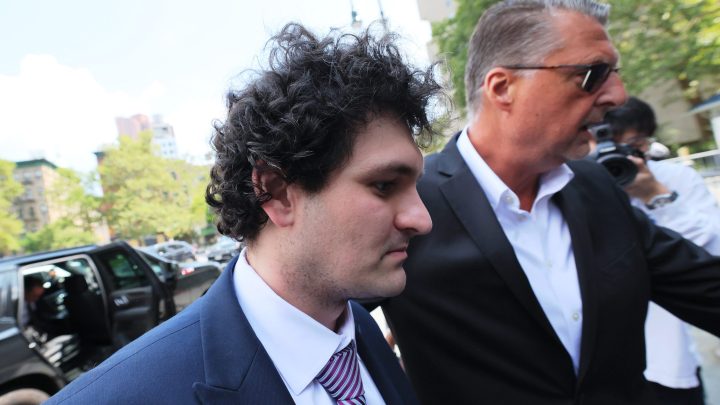
The trial of Sam Bankman-Fried provides early lessons for crypto
The trial of Sam Bankman-Fried provides early lessons for crypto

The fraud trial of Sam Bankman-Fried — co-founder of bankrupt cryptocurrency exchange FTX and its interwoven trading firm Alameda Research — continues in New York. Bankman-Fried is facing seven counts of fraud and conspiracy. If convicted, the penalty could effectively be life in prison.
Prosecutors are trying to build the case that Bankman-Fried misused money in customer accounts — as much as $10 billion to prop up his businesses. This week, the jury heard from the government’s star witness, Alameda’s CEO Caroline Ellison.
New York Times technology and crypto industry reporter David Yaffe-Bellany was in the courtroom and joined “Marketplace Morning Report” host David Brancaccio to discuss the latest trial developments.
David Brancaccio: So two days of testimony. What did we learn from Caroline Ellison, who I should mention was also an on-and-off romantic partner of Bankman-Fried. What did we learn about how Alameda, this trading firm, worked with FTX?
David Yaffe-Bellany: This was the most hotly-anticipated testimony of the trial for all the reasons that you’ve laid out. She was a key executive in his orbit and she was also his ex-girlfriend. And we’ve learned a ton about the relationship between Alameda and FTX. Yesterday, she talked at length about how Sam directed her to essentially create phony balance sheets that she then circulated to companies that were lending Alameda money, and the balance sheets essentially concealed the fact that Alameda was struggling a lot and that it was borrowing money from the FTX exchange from customers to kind of prop up its business.
Brancaccio: [He] lied to lenders. And is it even in dispute that customer money was used to prop up Bankman-Fried’s enterprises?
Yaffe-Bellany: He’s essentially been arguing in public is that this was a huge accounting screw up, he wasn’t aware of how much money was being borrowed from the exchange, that because of the way FTX operated, it would have been appropriate for at least some money to have been borrowed, but that this got out of control due to sort of disorganization at the highest levels of the company. I mean, is that a convincing explanation? You know, a lot of people have said it isn’t, but we’ll probably hear more along those lines as the trial proceeds.
Brancaccio: Look, the trial’s still ongoing, but do you have enough distance to answer this: Do you see emerging lessons here for financial regulators and investors with regards to other crypto exchanges and their trading firms?
Yaffe-Bellany: I mean, there were red flags all over FTX. It didn’t have a risk-management team. It didn’t have a board of directors. You know, Sam would be on conference calls with investors, you know, pitching them on FTX and he’d be playing video games at the same time. You know, while FTX was thriving, all of this was painted as sort of a sign that he was smarter than everybody else, that he was brave enough to do things differently, and that he didn’t waste money on kind of useless protocols. But I think what we’ve learned is that even in the kind of renegade world of crypto, these sort of lessons from traditional finance still apply. You know, there needs to be somebody who’s overseeing things and, you know, it doesn’t make sense to just trust everybody’s money with kind of one charismatic figure.
There’s a lot happening in the world. Through it all, Marketplace is here for you.
You rely on Marketplace to break down the world’s events and tell you how it affects you in a fact-based, approachable way. We rely on your financial support to keep making that possible.
Your donation today powers the independent journalism that you rely on. For just $5/month, you can help sustain Marketplace so we can keep reporting on the things that matter to you.











